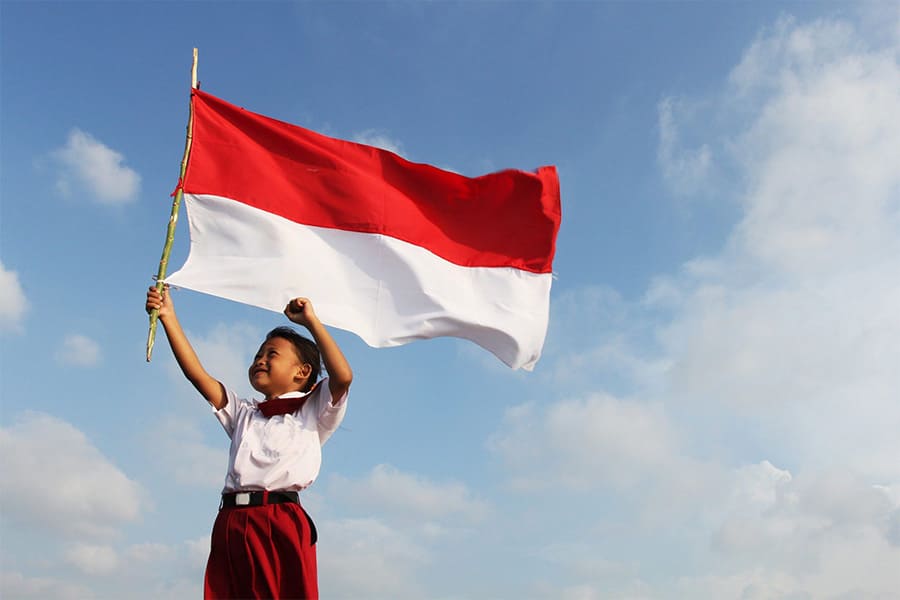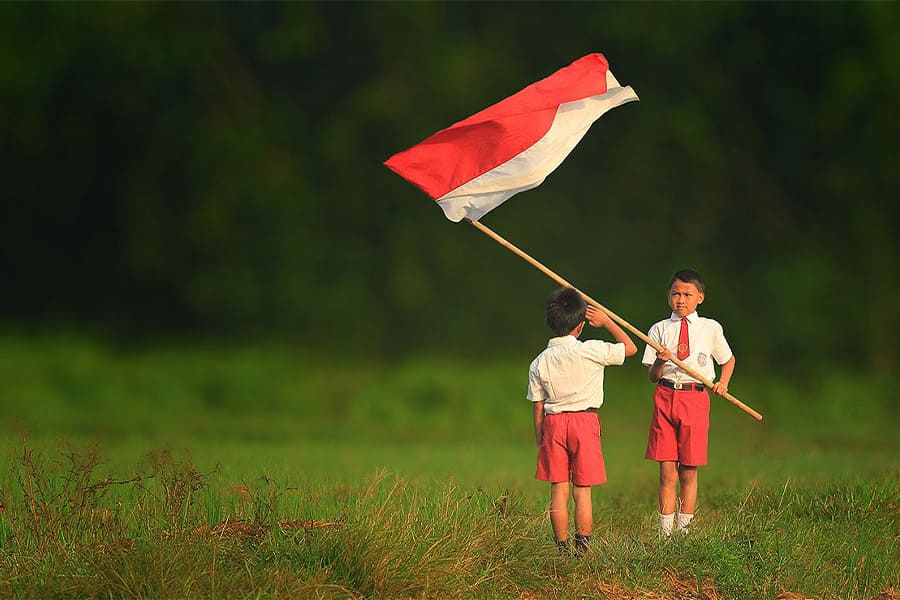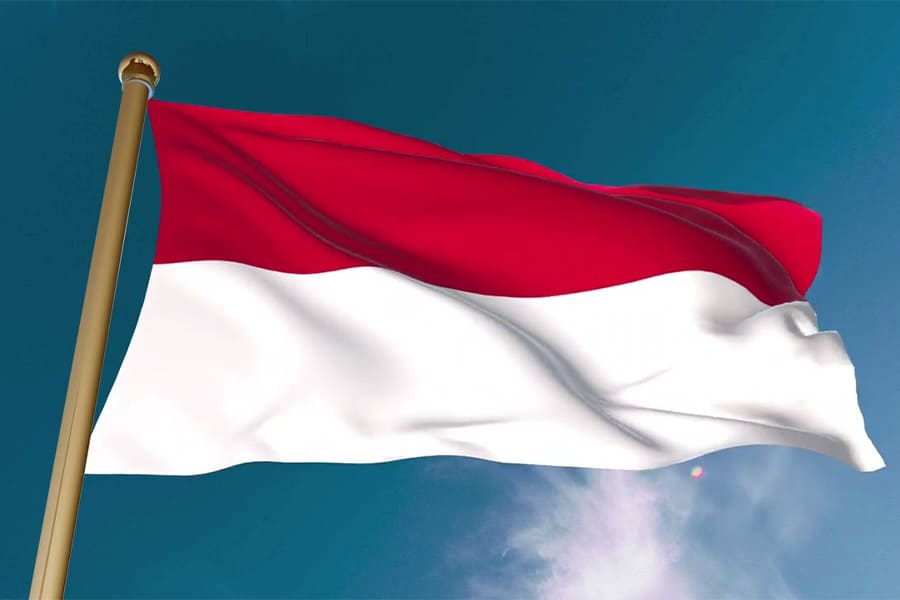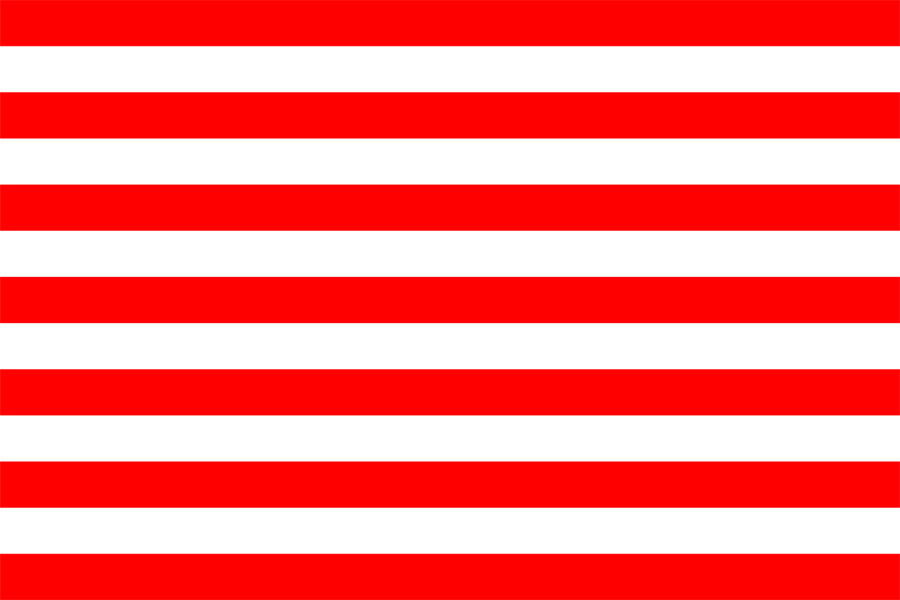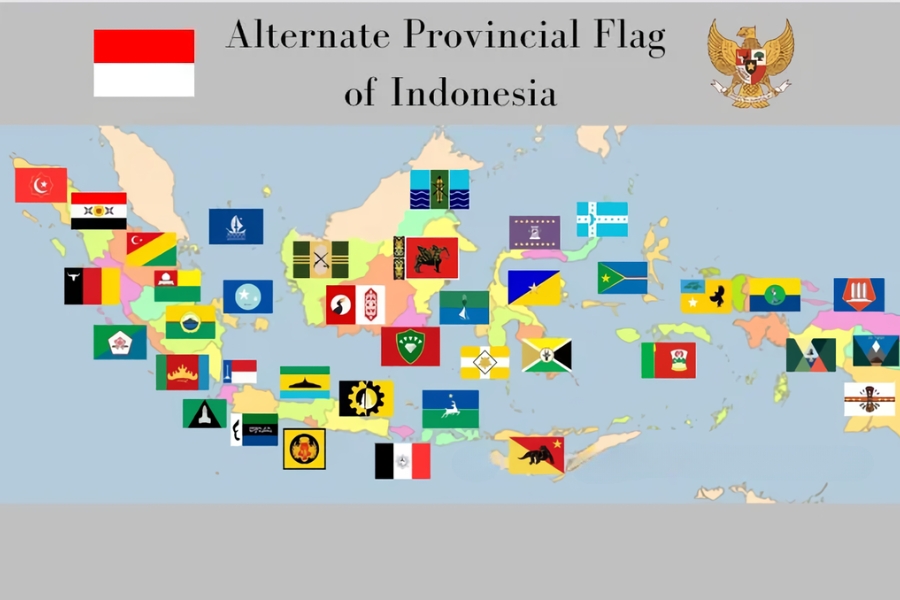The Indonesia flag, known as Sang Saka Merah-Putih, is a powerful symbol of the nation’s unity and independence, proudly waving red and white to reflect courage and purity. For travelers exploring an Indonesia tour package, this iconic flag is a vibrant reminder of the country’s rich history and cultural diversity. From the bustling streets of Jakarta to the serene beaches of Bali, the Indonesia flag marks the journey through a land of over 17,000 islands, inviting visitors to discover its heritage and natural beauty.
Introduction to the Indonesia Flag
Brief Overview of the Flag of Indonesia
The Indonesia flag, often referred to as the flag of Indonesia or the Indonesian flag, is a simple yet powerful bicolor design consisting of two equal horizontal bands: red on top and white on the bottom. With a width-to-length ratio of 2:3, this Indonesia country flag is known locally as Sang Saka Merah-Putih, meaning "The Sacred Red-and-White." It serves as both the national flag and ensign, symbolizing the nation's unity and independence. The flag's straightforward design makes it easily recognizable worldwide, though it bears a resemblance to the flags of Monaco and Poland, differing mainly in shades and proportions. Adopted officially on August 17, 1945, the Indonesia flag has remained unchanged, embodying the spirit of a diverse archipelago nation with over 17,000 islands.
Importance of the Indonesian Flag in National Identity
The Indonesian flag plays a pivotal role in fostering national identity among Indonesia's multicultural population. As a symbol of sovereignty and unity, the flag of Indonesia unites people from various ethnic, religious, and linguistic backgrounds under one banner. It evokes a sense of pride and patriotism, especially during national holidays like Independence Day. The Indonesia flag is more than just a piece of cloth; it represents the collective struggle for freedom and the shared values of courage and purity. In schools, public buildings, and homes, displaying the Indonesian flag reinforces a sense of belonging, helping to build a cohesive national narrative in a country as vast and varied as Indonesia.
History and Origins of the Flag of the Indonesia
Pre-Independence Symbols and Colors
Before independence, the colors red and white held deep historical significance in Indonesian culture. Tracing back to the 13th-century Majapahit Empire, these hues appeared in banners and textiles, symbolizing ancient Austronesian beliefs where red represented Mother Earth and white signified Father Sky. Various kingdoms, such as the Batak, Aceh, and Balinese Badung, incorporated red and white into their symbols. In the early 20th century, nationalist movements revived these colors; for instance, in 1908, the Perhimpoenan Indonesia student group featured a red-and-white flag with a banteng (wild bull) head on their magazine cover. The Dutch colonial authorities banned such displays, but the colors persisted as emblems of resistance, laying the groundwork for the modern Indonesia flag.
The Birth of the Indonesia Country Flag in 1945
The Indonesia country flag was born amid the fervor of independence. On August 17, 1945, during the proclamation of independence at 56 Jalan Proklamasi in Jakarta, the flag was hoisted for the first time by Latief Hendraningrat and Suhud, with Fatmawati, wife of President Sukarno, sewing the original banner. This act marked the end of Japanese occupation and the beginning of the struggle against Dutch recolonization. A famous incident in Surabaya later that year saw youths tear the blue stripe from a Dutch flag at the Yamato Hotel, creating an impromptu red-and-white banner, symbolizing defiance. Officially recognized in 1950 after sovereignty transfer, the flag of the Indonesia became a cornerstone of the new republic.
Design and Symbolism of the Indonesian Flag
Meaning of the Red and White Colors
The design of the Indonesian flag is minimalist, featuring red atop white in equal proportions. Red symbolizes courage, bravery, and the blood shed for freedom, while white represents purity, honesty, and the sanctity of the human spirit. As explained by Sukarno, these colors encapsulate a complete human being: red for the physical body and white for the soul. The flag's colors are precisely defined, with digital RGB values of 255-0-0 for red and 255-255-255 for white, ensuring consistency in reproduction. This symbolism draws from centuries-old traditions, making the Indonesia flag a timeless emblem.
Cultural and Historical Interpretations
Culturally, the red and white of the flag of Indonesia reflect Austronesian duality and historical empires like Majapahit, where similar banners were used in battles and ceremonies. Historically, interpretations vary: some link red to sacrifices in the independence war, while white denotes peace and spiritual integrity. In modern contexts, these colors inspire art, literature, and festivals, reinforcing cultural heritage. The Indonesia flag's symbolism also extends to diplomacy, where it represents resilience and harmony in a pluralistic society.
Protocol and Etiquette for the Flag of Indonesia
Rules for Hoisting the Indonesia Country Flag
Hoisting the Indonesia country flag follows strict protocols outlined in Law No. 24/2009 and Government Regulation No. 40/1958. The flag must be raised from sunrise to sunset, though exceptions allow nighttime display with proper lighting. It should never touch the ground, be used as clothing, or be flown in a damaged state. When hoisted with other flags, the Indonesian flag takes precedence, positioned highest or to the right. Citizens are encouraged to display it respectfully, and violations can result in fines or imprisonment, emphasizing the flag's sacred status.
Occasions When the Flag of the Indonesia is Displayed
The flag of the Indonesia is displayed on key occasions, including Independence Day on August 17, when massive flag-raising ceremonies occur nationwide. It adorns government buildings daily, and on national holidays like Heroes' Day or Pancasila Day. During funerals of national figures, the flag covers coffins. Internationally, it's flown at embassies and events, symbolizing presence. Private citizens display it during elections, sports victories, and cultural festivals, fostering patriotism.
Variations and Related Flags
Naval and Government Versions of the Indonesian Flag
Variations of the Indonesian flag include naval and government adaptations. The Naval Jack features nine alternating red and white stripes, inspired by Majapahit, and is used on warships. The Commissioning Pennant, or Ular-Ular Perang, is a swallowtail version for active navy vessels. Government versions, like the rarely used presidential standard from Sukarno's era, incorporate emblems. Military branches have distinct flags: the Army's green with "Kartika Eka Paksi" motto, Navy's blue with "Jalesveva Jayamahe," and Air Force's blue with "Swa Bhuwana Paksa."
Regional and Historical Flag Influences
Regional flags in Indonesia often feature provincial emblems on monochromatic backgrounds, such as North Sulawesi's with its inscription. Historical influences include pre-colonial kingdom banners and colonial-era designs. The Indonesia flag draws from Majapahit and other empires, while modern regional variations reflect local identities without altering the national colors. Influences from Singapore and Monaco highlight shared heraldic traditions, though differences exist in symbolism and use.
The Indonesia Flag in Modern Times
Use of the Flag in International Events
In modern times, the Indonesia flag shines at international events, from the Olympics to ASEAN summits, representing athletic prowess and regional cooperation. During the 2018 Asian Games hosted in Jakarta, the flag was prominently displayed, boosting national pride. At UN assemblies and G20 meetings, the Indonesian flag underscores Indonesia's global role in climate talks and economic forums, symbolizing a rising power.
Role of the Indonesia Country Flag in Diplomacy and Culture
The Indonesia country flag plays a vital role in diplomacy and culture, flown at embassies to signify alliances and during state visits to foster relations. Culturally, it appears in festivals like Bali's Nyepi or Java's Wayang performances, blending tradition with modernity. In pop culture, the flag inspires music, fashion, and art, promoting Indonesian heritage worldwide. As a diplomatic tool, the Indonesia flag aids in soft power, enhancing tourism and international goodwill.

